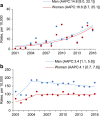Diabetes and infection: review of the epidemiology, mechanisms and principles of treatment
- PMID: 38374451
- PMCID: PMC11153295
- DOI: 10.1007/s00125-024-06102-x
Diabetes and infection: review of the epidemiology, mechanisms and principles of treatment
Abstract
An association between diabetes and infection has been recognised for many years, with infection being an important cause of death and morbidity in people with diabetes. The COVID-19 pandemic has re-kindled an interest in the complex relationship between diabetes and infection. Some infections occur almost exclusively in people with diabetes, often with high mortality rates without early diagnosis and treatment. However, more commonly, diabetes is a complicating factor in many infections. A reciprocal relationship occurs whereby certain infections and their treatments may also increase the risk of diabetes. People with diabetes have a 1.5- to 4-fold increased risk of infection. The risks are the most pronounced for kidney infection, osteomyelitis and foot infection, but are also increased for pneumonia, influenza, tuberculosis, skin infection and general sepsis. Outcomes from infection are worse in people with diabetes, with the most notable example being a twofold higher rate of death from COVID-19. Hyperglycaemia has deleterious effects on the immune response. Vascular insufficiency and neuropathy, together with altered skin, mucosal and gut microbial colonisation, contribute to the increased risk of infection. Vaccination is important in people with diabetes although the efficacy of certain immunisations may be compromised, particularly in the presence of hyperglycaemia. The principles of treatment largely follow those of the general population with certain notable exceptions.
Keywords: Antimicrobials; Bacteria; Diabetes; Epidemiology; Infection; Pathogenesis; Review; Virus.
© 2024. The Author(s).
Figures



References
-
- McLaughlin CW, Jr, Wiedman JG. Infection and gangrene in the diabetic extremity. A critical review of surgical management over a seventeen-year period. Nebr State Med J. 1950;35(10):316–319. - PubMed
Publication types
MeSH terms
LinkOut - more resources
Full Text Sources
Medical

